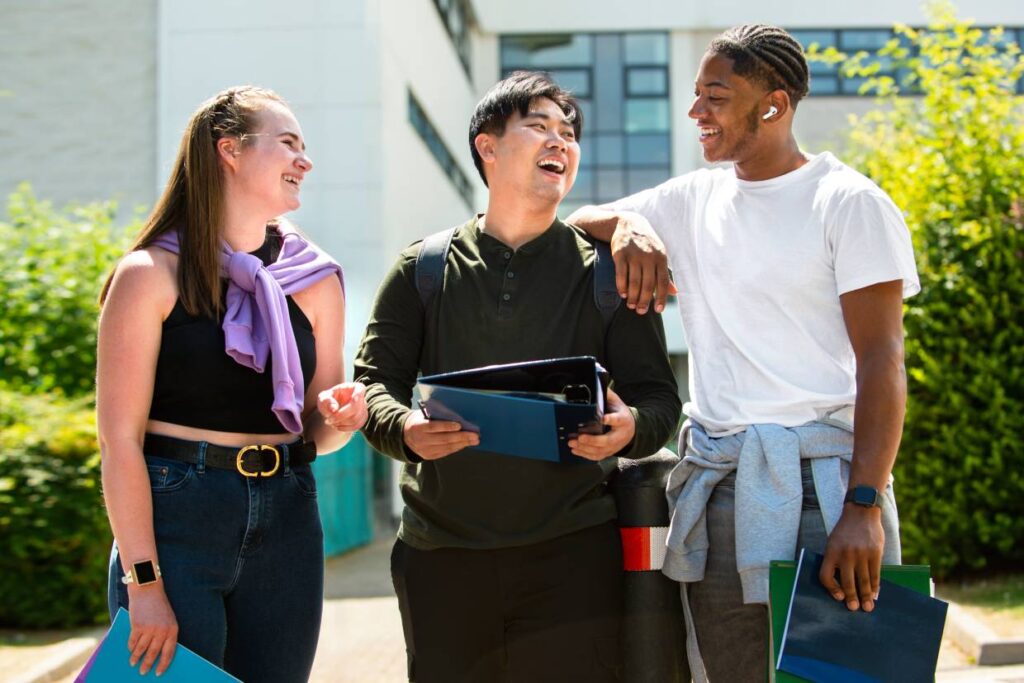As college educators, we know that teaching adults vastly differs from teaching children due to several key factors. It’s important to recognize and address these differences so that we can effectively teach in today’s college classrooms. Doing so will help us to engage better and retain our students, but more importantly, enable us to maximize student success and help them reach their academic goals.
Understanding Adult Learners in Higher Education
Life Experience and Motivation
One of the first things we need to understand is that adult learners bring life experience to the classroom. Even more so at the graduate level, adults come to the table with many life experiences, prior knowledge, and skills. They have a more extensive knowledge base to build upon compared to children.
Effective adult education acknowledges and respects this existing knowledge and should try to leverage it in the classroom to create rich learning experiences. Also, adult learners are more likely to be intrinsically motivated, meaning they want to learn for personal satisfaction and growth, in contrast to children primarily motivated by external rewards.
Adults often choose to learn or seek a degree because they see a direct benefit or relevance to their lives, careers, or interests.
Self-Directed Learning and Engagement
In contrast, children may not always grasp the immediate practicality of what they are learning. Therefore, assignments and projects that make a real-world connection help to draw them into the learning experience (Baumgartner & Merriam, 2020).
Another critical aspect of adult motivation to learn is self-directedness. Mature learners are more likely to take ownership of their learning process, set their goals, and decide how to achieve them. Your course design and assignment selection should encourage and support this autonomy. Consider giving them options and customizing assignments based on career-related projects or work in the community. Active learning solutions tend to be very well-received in this regard.
Accommodating Diversity and Challenges
Adult learners are diverse and have distinct learning preferences, needs, and backgrounds. College educators should provide various learning opportunities to accommodate a diverse range of choices while also recognizing differing cultural backgrounds.
A very important point to consider about adult learners is the unique challenges they face outside of the classroom in pursuit of their degree. They often have busy lives with work, family, and other responsibilities, and this necessitates that we, as instructors, engage them with empathy, compassion, and flexibility, recognizing that they may need to balance their studies with other commitments.
Since students have a wide range of choices in higher ed’s competitive marketplace, we can increase retention and persistence by engaging them in this way.
Relevance and Feedback
Consider your course design and content. Are your materials and content relevant and up to date? Mature students are more likely to engage when they see the immediate relevance of their learning.
As mentioned, since our students often bring personal experience to the classroom, good instruction can build upon this knowledge and encourage peer-to-peer learning and collaboration (King, 2017). Also, students appreciate constructive, specific feedback and assessments that help them gauge their progress and show where improvement is needed.
Timely feedback is crucial because it allows learners to adjust before the next assignment, increases efficacy, and builds confidence and motivation. When students do not receive specific or timely feedback, they begin psychologically disengaging from the course and feel helpless, which leads to dropped courses and even transfers to other institutions.
Lastly, in most cases, it’s best to avoid hiding future week’s content. Instead, students should be allowed to see all the material and assignments to plan how they approach their studies and balance them with outside obligations. Doing so both reduces anxiety and supports student autonomy.
Student-Centered Approach
The differences between teaching adults and children necessitate a unique approach to higher education. As instructors, we should recognize and respect our students’ diverse backgrounds, motivations, and learning preferences and allow that to inform how we teach.
Ultimately, this student-centered approach creates a learning environment that fosters student success, confidence, and critical thinking, which eventually helps them achieve their personal and professional goals.








